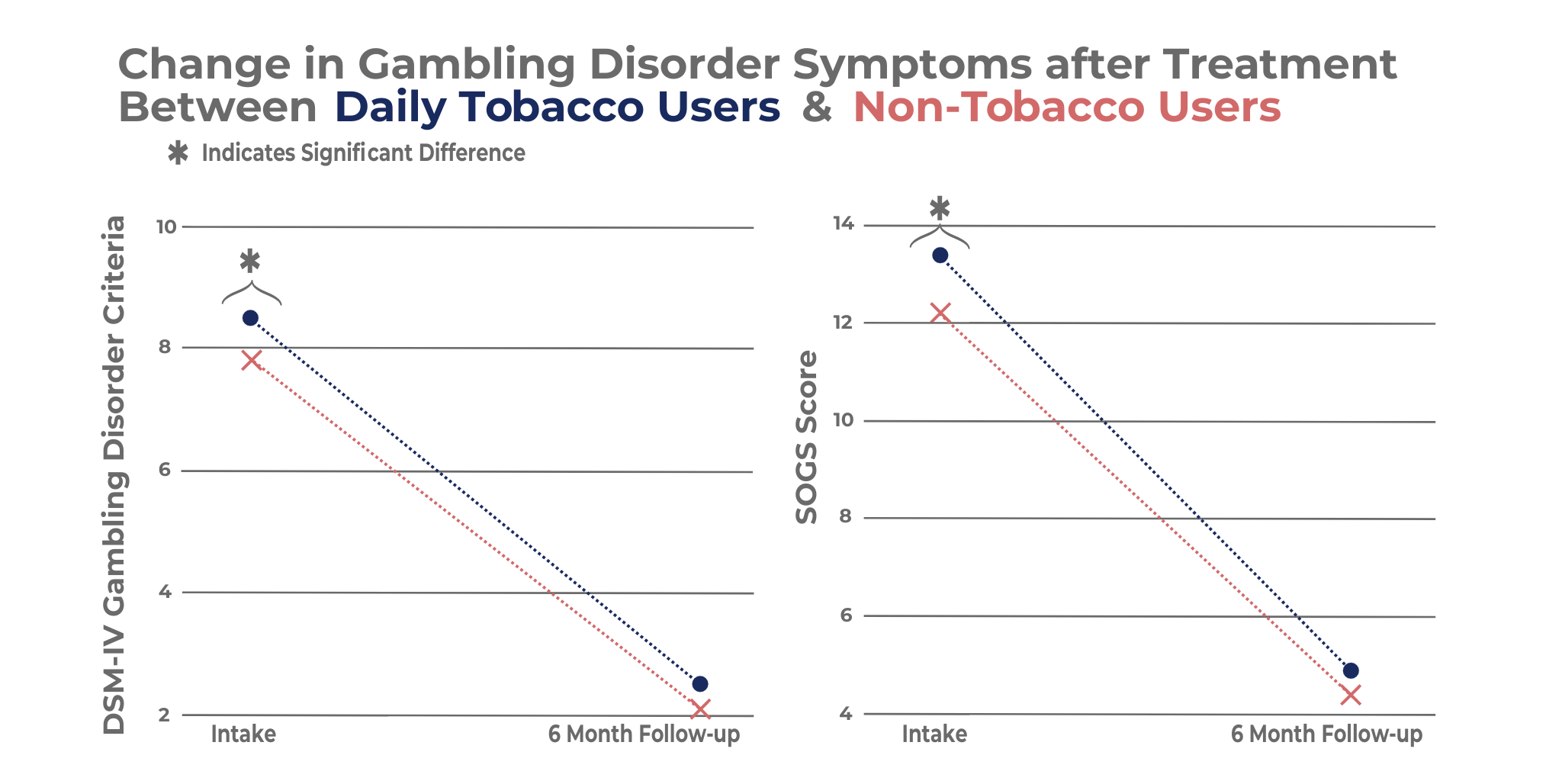Many people who experience problems with gambling are also dependent on tobacco. Previous research suggests that these individuals might have more severe symptoms of Gambling Disorder (GD) and could have a more difficult time maintaining abstinence from gambling during treatment. This week, as part of our Special Series on Gambling Disorder, ASHES reviews a study by Brian Odlaug and colleagues that examined whether tobacco use influences treatment outcomes for people with GD.
What was the research question?
Among people who seek treatment for Gambling Disorder, do those who use tobacco daily achieve gambling abstinence at the same rate as those who do not?
What did the researchers do?
The researchers recruited 420 people seeking treatment for GD at eleven different treatment centers in Minnesota to participate in this study. They then categorized the participants into two groups: daily tobacco users and those who did not use any tobacco in the past year.1 Participants completed questionnaires at the beginning of treatment and six months after being discharged from treatment. The questionnaires inquired about participants’ smoking habits and aspects of their gambling disorder symptoms.2 The researchers used Multivariate Analysis of Variance (MANOVA) to examine whether tobacco users and non-tobacco users differed in their responses to treatment.
What did they find?
Before beginning treatment, daily tobacco users had more symptoms of GD than nonusers. Their symptoms were also more frequent and severe, and showed up at an earlier age. Both groups experienced statistically significant reductions in gambling frequency, gambling-related financial issues, GD symptoms and severity six months after completing treatment (see figure). This improvement did not differ between the two groups; that is, daily tobacco users and nonusers were equally successful in their recovery from GD. Daily tobacco use was not associated with the likelihood of dropping out of treatment, nor was it related to the number of days a person gambled at the six-month follow-up.

Figure. The graphs show improvements over time between the two groups on two different measures of Gambling Disorder symptoms. DSM-IV = Diagnostic and Statistical Manual, 4th Edition. SOGS = South Oaks Gambling Screen. Click image to enlarge.
Why do these findings matter?
People experiencing both tobacco use disorder and gambling disorder at the same time might be at higher risk of experiencing suicidal thoughts, other forms of addiction, and other mental health disorders. The findings of this study, however, offer some hope – these individuals might benefit from GD treatment just as much as those who do not smoke.
Every study has limitations. What are the limitations in this study?
The participants in this study received treatment from a variety of sources (i.e., outpatient treatment organizations, individual counselors, and an inpatient treatment center), and the authors of this study did not specify what kind of treatment the participants received, or if they even received the same kind of treatment. It is possible that participants with tobacco-related problems received more specialized care from their healthcare providers, which allowed them to achieve the same level of recovery as those participants who did not use tobacco.
For more information:
SmokeFree offers tools and tips quitting and maintaining abstinence from smoking tobacco. Your First Step to Change is a free self-help resource for those concerned about their gambling or smoking. For additional tools, please visit the BASIS Addiction Resources page.
— Rhiannon Chou Wiley
What do you think? Please use the comment link below to provide feedback on this article.
________________
1The researchers excluded 35 people who used tobacco less frequently than daily from this sample, or who did not provide complete information about their tobacco use.
2As measured by the GAMTOMS, an interview system that includes the South Oaks Gambling Screen and DSM-IV diagnostic criteria for Pathological Gambling.




